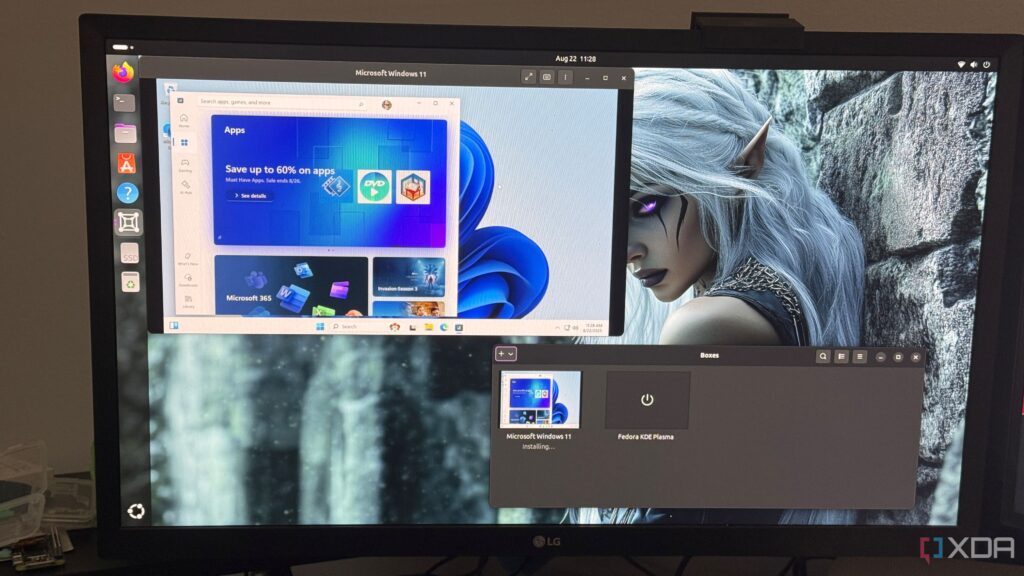
UPDATE: Gnome-Boxes is emerging as a game-changer in the world of Linux virtualization, offering newcomers an accessible and powerful tool to run multiple operating systems. This user-friendly application is designed to streamline the virtualization process, making it easier than ever for users to experiment without risking their main system.
Virtualization is critical for Linux users wishing to test new distributions or run Windows software. Unlike traditional platforms like VirtualBox and VMware, which often overwhelm beginners with complex configuration steps, Gnome-Boxes simplifies the experience into just a few clicks. Users can easily upload an ISO file or choose from a selection of built-in operating systems, with the application handling the technical setup automatically.
This innovative approach is vital for users who seek to jump into virtualization without getting bogged down by intricate settings. Gnome-Boxes operates on libvirt and QEMU/KVM, delivering near-native performance that makes virtual machines feel responsive and smooth. With this capability, users can efficiently test software or run productivity applications without the sluggishness commonly associated with virtualization.
Gnome-Boxes is also seamlessly integrated with the Gnome desktop environment, enhancing usability. Virtual machines open within distraction-free windows that blend with the desktop’s design, allowing users to switch between their host and guest environments effortlessly. Installation is straightforward, often requiring just a single command on various Gnome-based distributions, making it exceptionally approachable for beginners.
The integration features do not stop at aesthetic appeal. Gnome-Boxes supports clipboard sharing, file transfers, and automatic resolution adjustments right out of the box, minimizing setup frustration and fostering a smoother workflow. These functionalities make the application feel like a natural extension of the Linux experience rather than a cumbersome add-on.
However, while Gnome-Boxes excels in accessibility and performance, it is not without limitations. Users needing advanced features such as GPU passthrough or multi-VM setups may find Gnome-Boxes insufficient for their needs. In these cases, more complex solutions like VMware or direct QEMU management remain preferable.
Notably, Gnome-Boxes is exclusively available on Linux, which could deter users in mixed environments that also require Windows or macOS tools. For teams or professionals navigating multiple operating systems, this lack of cross-platform support may be a significant drawback.
For those looking to install Windows 11 using Gnome-Boxes, obstacles may arise due to the absence of the TPM 2.0 module required for a standard installation. While it is still possible to run Windows 11, users will have to navigate additional steps, such as modifying registry keys or creating custom installation media with tools like Rufus.
Despite these challenges, the vast majority of Linux users will find Gnome-Boxes suitable for personal and small-scale use cases. With its user-centric design, the application efficiently handles tasks like testing new distributions and running software sandboxes, making it one of the most approachable options in virtualization.
Gnome-Boxes embodies the essence of user-friendly Linux applications by prioritizing clarity and performance. It breaks down the barriers that often discourage newcomers from exploring virtualization, offering a welcoming entry point into the realm of virtual machines.
As more users look for intuitive solutions, Gnome-Boxes stands out by making virtualization feel natural on Linux. Its blend of simplicity, performance, and seamless integration ensures it meets the needs of both novices and experienced users alike.
For anyone seeking an effective virtualization tool, Gnome-Boxes is the answer—removing the fear of complex configurations and enabling effortless experimentation. This innovative application is poised to change how Linux users engage with virtualization, solidifying its status as a must-have tool in the Linux community.





